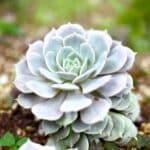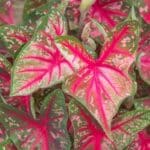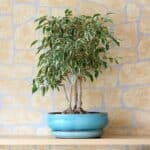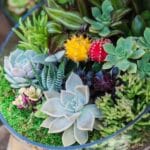Monsteras are species of evergreen tropical vines and shrubs, which are native to Central America. They are renowned for their natural leaf-holes, giving rise to its other name, “Swiss Cheese Plant.”
These leaf holes are known as fenestrations. Two of the monstera species cultivated as houseplants are Adansonii and Deliciosa.
Although both the Monstera Adansonii vs Deliciosa varieties come from one family (Araceae and Genus), they still possess some differences.
The most notable is that the Adansonii possesses longer, tapering leaves and fully enclosed leaf holes. In contrast, the Deliciosa leaf holes eventually grow towards the edge and open up as they mature.
More on that later!
Let’s get to understand the plants better first!
Table of Contents
What is Monstera Adansonii?
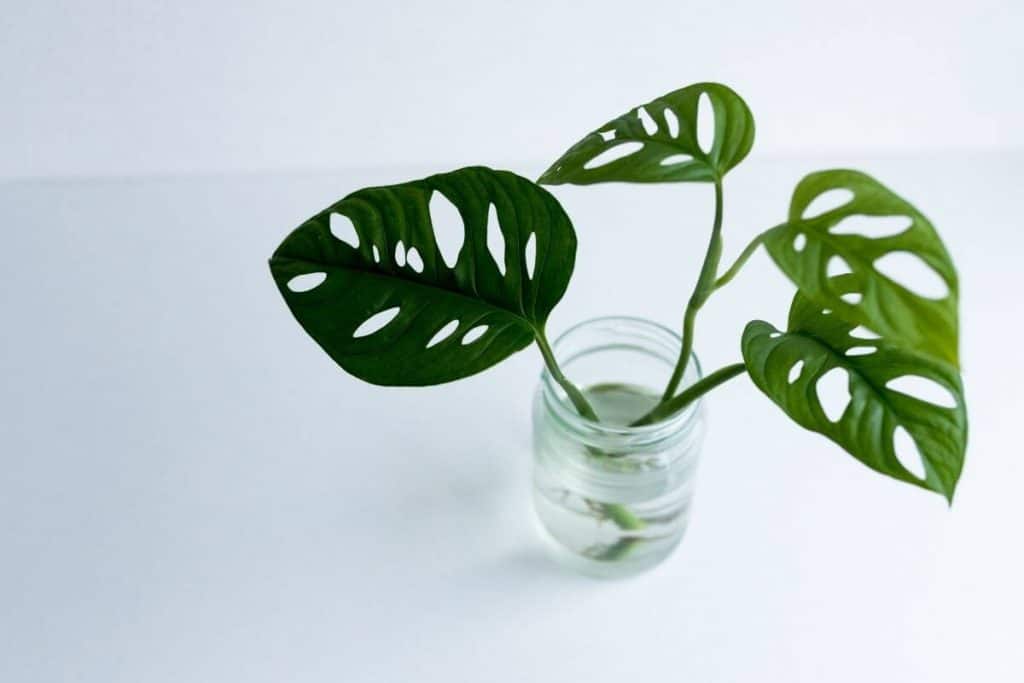
The Monstera Adansonii, sometimes called the Swiss Cheese Plant, is a wonderful flowering plant with attractive heart-shaped leaves.
Due to its oval-shaped holes or fenestrations spotted all over the leaf, it is sometimes referred to as Monstera Adansonii Swiss Cheese or Swiss Cheese Plant.
It is also a species of flowering plant from the Araceae family, which is widespread across much of South America and Central America.
You can also see traces of it in the West Indies on Islands like Antigua, Grenada, Saba, St. Kitts, Guadeloupe, Marie, and St. Lucia, amongst others. It is quite predominant close to river valleys at lower elevations.
The Adansonii variety can grow at 3 to 5 inches tall as a houseplant and 13 inches tall as a vine. It has Monstera Adansonii ‘Archipelago’ with variegated leaves, almost similar to Monstera Deliciosa ‘Variegata.’
The plant is rare but most commonly found in the USA and Asia.
Related Post: Cebu Blue Pothos Vs Philodendron
What is Monstera Deliciosa?

The Monstera Deliciosa also referred to as the split-leaf philodendron, is a large, bold houseplant that is native to the rainforests of Central America.
As well as been a very famous beautiful, and attractive climbing plant, it is also easy to grow and maintain. That is why it is largely a favorite of several interior designers for both home and office environs.
Growing them indoors features a moderate growth rate and can grow up to 1 to 2 feet tall per year. It possesses leathery, glossy, characteristic split, and heart-shaped leaves from intricate aerial roots, which can be used for ropes and basket-making.
It has other names such as the Swiss Cheese Plant because of its perforated leaves, which can grow up to 3 feet long, and Mexican Breadfruit, because of its corncob-shaped fruit, with a combination of pineapple, banana, and mango taste.
However, the other part of the plant is poisonous, and its effect is mouth irritation.
You can also plant them outdoors in the right zone at any time during the year, and it will also produce tannish-cream flowers pollinated by bees and edible juicy fruit, featuring a combination of pineapple and banana flavors.
However, fruiting is not common in houseplants. It is also toxic to pets.
Monstera Adansonii Vs Deliciosa
| Monstera Adansonii | Deliciosa |
| Has smaller leaves than that of the Deliciosa. | Has bigger leaves than that of the Adansonii. |
| Maximum growth of leaves ranges from 25 to 70cm (10 to 30inches) in length, and a width of 15 to 45cm (6 to 18inches). | Maximum growth of leaves ranges from 25 to 90cm (10 to 35inches) long and 25 to 70cm (10 to 30inches) in width. |
| Features narrower holes with oval shapes. | Features larger holes with semi-round and oblong shapes. |
| Leaves has many holes (8-16holes) on each side. | Leaves has fewer holes (1 to 5 holes) on each side. |
| Has straight & smooth-edged leaves. | Has irregular & lopsided leaves. |
Differences Between Monstera Adansonii and Deliciosa
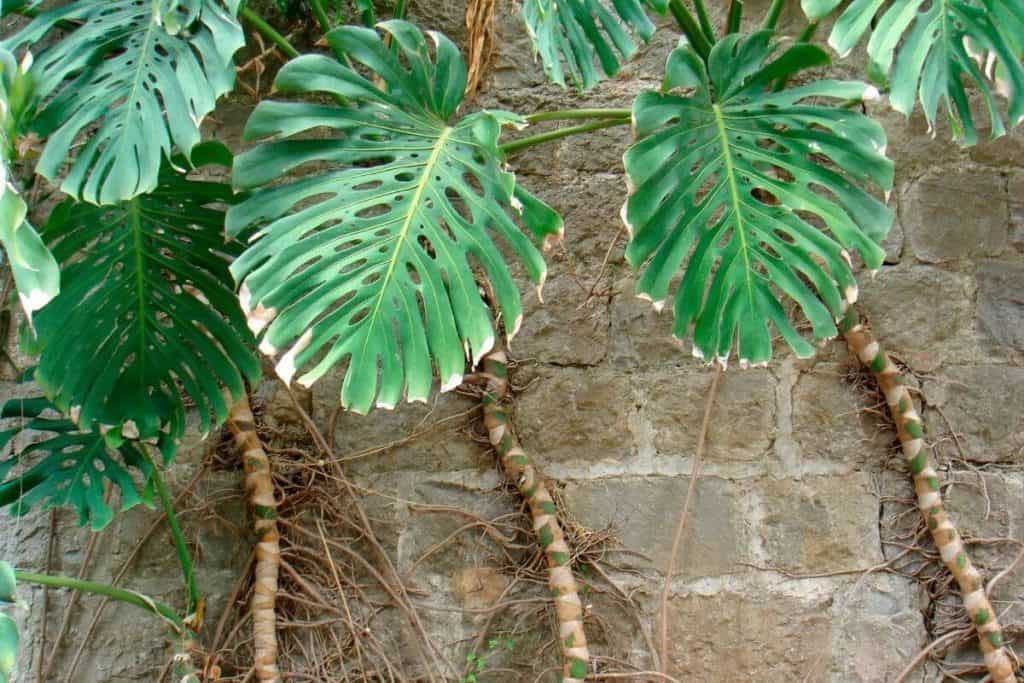
Despite coming from the same family and the obvious similarities drawn from both Monstera varieties, especially at their tender age, they are not entirely the same, though, as there are still glaring differences that can be drawn.
One of the most notable differences drawn from the Monstera Adansonii and the Deliciosa is the size of the leaves. The Adansonii has smaller leaves than that of the Deliciosa.
The ovate leaves of Adansonii can only grow 25 to 70cm (10 to 30inches) in length, with its lamina at a width of 15 to 45cm (6 to 18inches) wide.
On the other hand, the Deliciosa stands out with glossy and green leaves that almost always look gigantic. Its leaves can grow up to 25 to 90cm (10 to 35inches) long and 25 to 70cm (10 to 30inches) wide. It can even grow up to 100cm (40inches) in its natural environs.
However, do not forget that leave sizes vary under certain conditions. It may look big in favored conditions with adequate water, sunlight, and fertilizer, amongst others. Aside from that, it may grow smaller leaves.
Another notable difference between both varieties is the holes in the leaves. Both plants have contrasting sizes, shapes, and numbers of holes.
For instance, the Adansonii variety features narrower holes with different shapes that are mostly oval. Though it has smaller leaves, it acquires many holes (8-16holes) on each side of the midribs.
On the other hand, the Deliciosa variety features larger perforated leaves as large as 0.5 to 0.8cm long.
The holes are semi-round and oblong, but it has fewer holes than the Adansonii, with not more than 1 to 5 holes on each side of the leaves. Note that, the more both plants mature, the more holes it develops.
Again, the Adansonii has a smooth edge, and its leaves will produce a straight and uninterrupted path if you decide to trace it on both sides.
In contrast, the Deliciosa variety has holes between the primary leaf veins that extend near the mid-rib to its edges and produce gaps. Even when smooth, the leaf boundary will look irregular and lopsided.
Related Post: Monstera Obliqua Vs Adansonii
How are Monstera Adansonii and Deliciosa Similar?
Like we mentioned earlier, these plants possess similar characteristics, as they belong to the same aroid family of plants.
For instance, in terms of their stem structure. Though the Monstera Adansonii and Deliciosa have different heights, they seem to possess identical stems.
They both have long stems that develop several nodes. Unlike other Monstera varieties like the Obliqua, both do not grow stolons.
Each internode of the Deliciosa plant measures 4-10cm (1.5-4inches) long, which is not too far away from that of the Adansonii at 3-10cm (1-4inches) length. Their vines also exhibit identical appearances.
Another notable identical feature of both plants is their root structure. Both the Adansonii and the Deliciosa have an aerial root system. Their roots emerge from the plant stem's location and above the soil's surface or growing means.
Both plant roots absorb water, dissolve minerals, and store foods. Meanwhile, both roots develop as plants mature.
As far as propagation is concerned, both the Adansonii and Deliciosa have the same propagation means. In other words, you can grow both by seed method, suckers, tissue culture, and stem cuttings.
However, the most popular way to propagate them is through the stem cutting method. They can also be grown in a well-draining potting mix.

